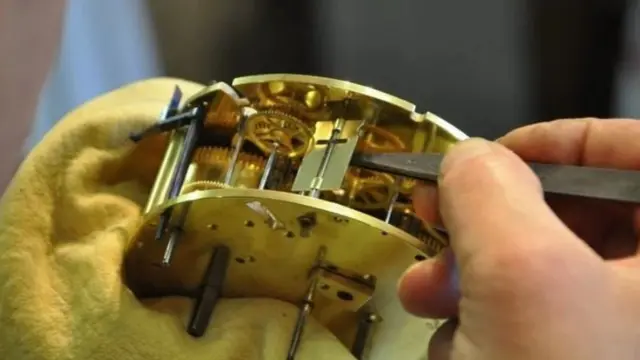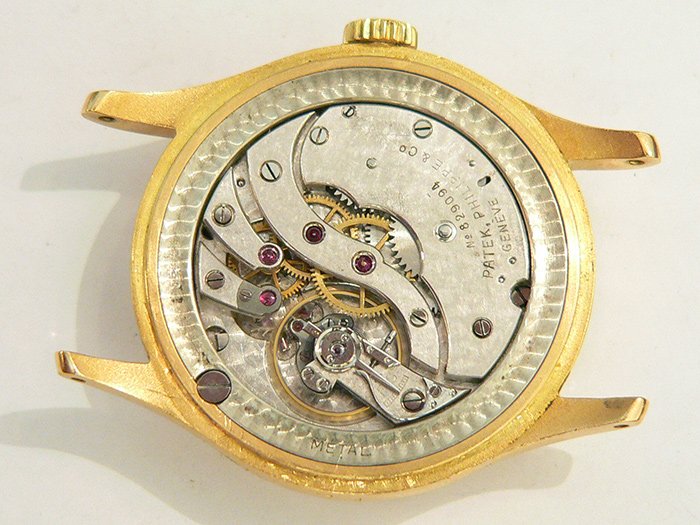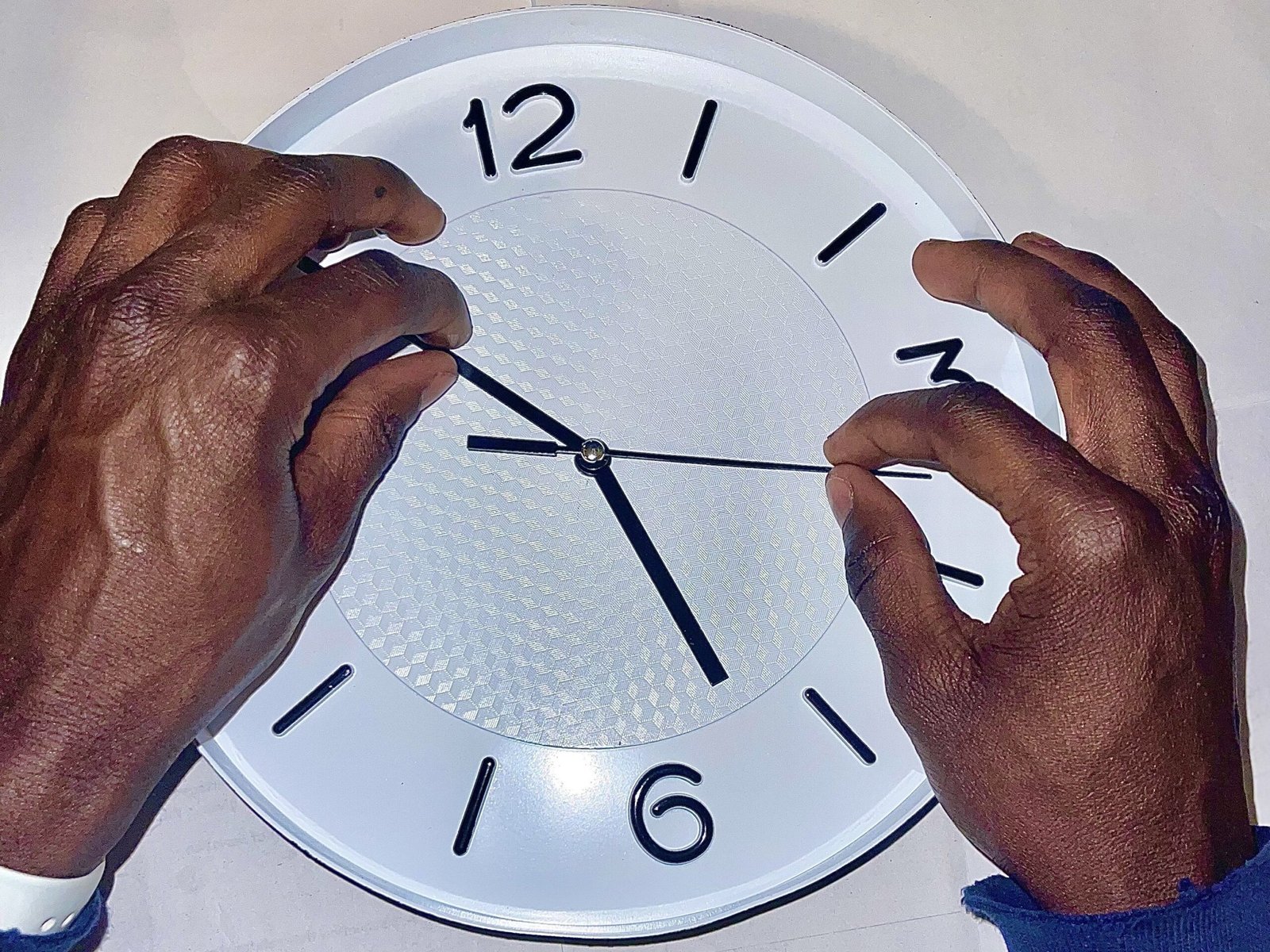Clock repair is more than just a technical skill; it’s a vital practice in preserving the historical and cultural heritage embodied by antique timepieces. From intricate grandfather clocks to vintage mantel clocks, each historical clock is a piece of history that reflects the craftsmanship and technological advancements of its time. In this guide, we explore the significance of clock repair in maintaining these valuable artifacts, the techniques used in restoration, and the impact of preservation efforts.
The Importance of Preserving Historical Timepieces
Historical clocks are not only functional objects but also significant cultural artifacts. They represent the artistry, engineering, and societal values of their respective eras. Preserving these timepieces ensures that future generations can appreciate and learn from past innovations and aesthetics. Proper clock repair and maintenance play a crucial role in this preservation effort by:
- Maintaining Historical Accuracy: Preserving the original mechanisms and features of a clock helps maintain its historical accuracy, allowing it to function as intended by its creators.
- Protecting Craftsmanship: Antique clocks often showcase exceptional craftsmanship and design that are valuable for historical study and appreciation.
- Enhancing Historical Education: Restored timepieces can serve as educational tools, offering insights into the technological and artistic developments of past centuries.
Key Aspects of Clock Repair for Historical Timepieces

1. Understanding Historical Context
Before starting any repair work, it’s essential to understand the historical context of the timepiece. This includes:
- Researching the Clock’s Origin: Identifying the maker, era, and style of the clock helps guide the repair process and ensures that any restoration work aligns with historical practices.
- Recognizing Unique Features: Historical clocks may have unique mechanisms or design elements that require specialized knowledge to repair correctly.
2. Restoration Techniques
Clock restoration involves carefully repairing and preserving the clock’s original components. Key techniques include:
- Disassembly and Cleaning: Carefully disassembling the clock to clean and inspect the components. Special attention is given to removing dust and debris without damaging delicate parts.
- Lubrication: Applying appropriate lubricants to moving parts to restore functionality. Historical clocks often require specific oils or lubricants that match the original materials.
- Repairing Mechanisms: Fixing or replacing damaged gears, springs, and other components while preserving as much of the original material as possible.
- Reassembly and Calibration: Reassembling the clock and calibrating it to ensure accurate timekeeping. This step involves meticulous adjustments to align the mechanisms properly.
3. Ethical Considerations
When repairing historical timepieces, it’s important to adhere to ethical principles:
- Minimizing Alterations: Avoid making unnecessary modifications that could compromise the clock’s historical integrity.
- Documenting Changes: Keeping detailed records of any repairs or restorations made to the timepiece. This documentation helps maintain the historical accuracy of the clock.
The Impact of Clock Repair on Historical Preservation
Effective clock repair and restoration contribute significantly to the preservation of historical timepieces. Here’s how:
- Extending Lifespan: Proper maintenance and repair can extend the lifespan of historical clocks, ensuring they remain functional and valuable for future generations.
- Enhancing Value: Well-preserved timepieces often retain or even increase their value, making them more desirable for collectors and historians.
- Promoting Awareness: Restoration projects raise awareness about the importance of preserving historical artifacts and can foster a greater appreciation for antique craftsmanship.
Challenges in Clock Repair for Historical Timepieces
Repairing historical clocks presents unique challenges, including:
- Finding Replacement Parts: Original parts for antique clocks may be difficult to find, requiring custom fabrication or adaptation of modern components.
- Balancing Restoration and Preservation: Striking the right balance between restoring functionality and preserving historical integrity can be challenging.
- Specialized Knowledge: Repairing complex mechanisms often requires specialized knowledge and skills, making it essential to seek out experienced technicians.
Conclusion
Clock repair plays a crucial role in preserving historical timepieces, ensuring that these valuable artifacts continue to reflect the artistry and technological advancements of their eras. By understanding the historical context, employing appropriate restoration techniques, and adhering to ethical principles, repair specialists help maintain the integrity and value of antique clocks. The dedication to preserving these timepieces not only honors the craftsmanship of the past but also enriches our understanding of history and heritage.





bonos777club, sounds exclusive! Gonna see if I can claim my place amongst the winners! What’s everyone’s experience here been? bonos777club
G’day, fellas! Just had a punt on the 188bet88betapp. Pretty smooth experience, I reckon. Worth a crack if you’re keen for a bit of a flutter. Have a look: 188bet88betapp
Wenn es um Spieler aus diesen Regionen geht, können sie sich auf die Qualität
eines Glücksspielclubs verlassen, der diese
Lizenz besitzt. Es ist eine asiatische Organisation, die für die
Lizenzierung und Entwicklung des Glücksspielgeschäfts zuständig ist.
Nach Erteilung der Erlaubnis überwacht die Aufsichtsbehörde die weitere Tätigkeit auf der Glücksspielplattform genau.
Wenn die Webseite also das Logo der Malta Gaming Authority trägt,
kann ein Besucher sicher sein, dass es sich um eine zuverlässige Glücksspiel-Webseite
handelt. Die Glücksspiel-Regulierungsbehörde des Inselstaates
stellt strenge Anforderungen an diejenigen, die
eine Lizenz erhalten wollen.
Auch wenn Sie kostenlos Slots online spielen, möchten Sie anständige
Auszahlungen und Belohnungen sehen. Wir werden immer kostenlose Vegas Cent Slots lieben, aber wir
sind auch davon überzeugt, dass neuen Casinospielen ein Lob gebührt.
Unser Expertenteam stellt immer sicher, dass unsere kostenlosen Casinoslots sicher,
geschützt und echt sind. Es ist einfach, spaßige Demo-Slots kostenlos zu spielen.
Online Casinos können viel mehr Casinospiele als Spielotheken und Spielbanken anbieten. Wir haben für deutsche Spieler eine Liste der Top 100 Casinospiele in Deutschland vorbereitet.
Die besten und beliebtesten Spiele können Sie hier direkt
gratis ausprobieren. Casino.guru sieht sich als eine unabhängige Informationsplattform über Online Casinos
und Online Casinospiele, die von keinem Glücksspielanbieter oder irgendeiner
anderen Instanz kontrolliert wird. Wenn Spiele eines
bestimmten Spieleanbieters kostenlos gespielt werden können, haben wir diese mit ziemlicher Sicherheit
in unserer Datenbank für Sie vorrätig. Bei der überwiegenden Mehrheit der Spiele handelt es sich jedoch um Slotspiele.
References:
https://online-spielhallen.de/nine-casino-deutschland-ihr-umfassender-leitfaden/
Einen Wettbonus ohne Einzahlung erhältst Du bei vielen Anbietern im Rahmen des Willkommensbonus.
Du solltest aber wissen, dass ein No Deposit Bonus in seiner absoluten Höhe nicht so hoch ausfällt wie ein regulärer Einzahlungsbonus, der häufig bis zu 200 Euro
betragen kann. Der Bonus ohne Einzahlung hat, ist von Wettanbieter zu Wettanbieter unterschiedlich.
Am Ende dieser Seite finden Sie außerdem einen Stream mit den neuesten Bonusangeboten. Dieser Feed ist derzeit nicht verfügbar, wird aber in Kürze wieder online sein. Sie können Ihre No Deposit Freispiele oder Ihr No Deposit Gratisguthaben nutzen, um Spiele in dem von Ihnen gewählten Online-Casino auszuprobieren.
Der Einzahlungsbonus ist die bekannteste Form des
Wettanbieters Bonus. Die Wettanbieter bieten beinahe täglich neue Bonusangebote – dazu
gehört auch der Sportwetten Bonus ohne Einzahlung.
Dieses erhaltet ihr meist direkt nach der Registrierung bei
einem Wettanbieter als Teil des Willkommensbonus.
References:
https://online-spielhallen.de/arena-casino-auszahlungen-ihr-umfassender-leitfaden-zur-schnellen-gewinnauszahlung/
Verde Casino bietet neuen Kunden ein sehenswertes
Willkommensbonuspaket an. Obendrein ist auch der Willkommensbonus sehr üppig ausgelegt — bis zu 1.200
€ als Bonus für Einzahlungen kann man hier abstauben. Mit dem Registrierungsbonus können Sie sich gleich selbst ein Bild des Angebots machen. Folglich erhalten aktive Spieler mehr Cashback, je höher sie bereits im Treueprogramm aufgestiegen sind.
(Einzahlungen — (Auszahlungen + erhaltene Boni + aktuelles Guthaben))
x Cashback-Koeffizient
Und auch die mittlerweile in deutschen Online Casinos verbotenen Tischspiele kann man hier weiterhin problemlos spielen. Da Sie jetzt die grundlegenden Informationen über Aktionscodes kennen, haben Sie keinen Grund
zu zweifeln, ob es sich lohnt, sich in diesem Casino anzumelden. Damit sich das Bonusguthaben in echtes Geld konvertieren lässt, muss man auch mit
echtem Geld spielen. Man muss bei Freispielen zuerst
eine Drehung mit echtem Geld machen, ehe man seine Freispiele
nutzen kann. Promocodes für das Verde Casino kann man auf unterschiedlichen Wegen entdecken. Natürlich gibt es auch
bei uns Verde Casino Aktionscodes, durch die man sich hervorragende Angebote sichern kann.
Für die zweite und vierte Bonusstufe ist eine
Mindesteinzahlung von 15 Euro erforderlich. Verde Casino Promo Codes haben unterschiedliche Mindesteinzahlungsanforderungen, die erfüllt werden müssen, um den jeweiligen Bonus zu aktivieren. Verde Casino Promo Codes haben definierte maximale Bonusbeträge, die die Höchstsumme begrenzen, die Sie als Bonus erhalten können. Ein separater Verde Casino Promo Code “VERDEFORTYFIVE” bietet
einen Festbetrag von 45 Euro bei einer Mindesteinzahlung von 20 Euro.
References:
https://online-spielhallen.de/ihr-einstieg-ins-gluck-der-casino-of-gold-login/
“The casino floor at Crown Perth is massive, with a great mix of table games and pokies. Real reviews from guests who experienced the luxury, entertainment, and world-class service at Crown Perth in Western Australia. From express treatments to full day makeovers, Crown’s beauty salon and grooming bar offer premium services tailored for both men and women.
Located within the luxurious Crown Towers Perth, Crown Spa offers an oasis of calm designed to restore balance to your mind, body, and soul. Find thoughtful souvenirs, Crown-branded merchandise, and travel essentials at conveniently located resort stores. Crown Perth is home to a collection of high-end retail outlets offering luxury fashion, jewelry, watches, and accessories. Explore a curated selection of premium boutiques, designer labels, and gift stores located throughout the Crown Perth resort precinct. Crown Perth regularly features live music performances, tribute nights, and acoustic sets across its bars and venues. With over 2,000 seats and state-of-the-art acoustics, it’s one of Perth’s most prestigious entertainment halls.
References:
https://blackcoin.co/casino-australia-premier-online-casino-play-review/
DraftKings Rocket is an exclusive online casino game where you bet on how long a rocket
will stay in the air before it crashes. Because rocket game
gambling combines chance with timing, it’s always thrilling
to watch or read about players who managed to bail at
the perfect moment. DraftKings Rocket shows how in-house development can create exclusive online casino games.
By combining smart use of casino rocket bonuses with a clear
understanding of banking options, you can focus
more on the fun of the rocket launch game and
less on logistical hassles. For beginners playing casino games online,
we recommend starting manually to get a feel for the DraftKings Rocket game strategy before trying auto
mode.
Best value for money online casino Love the variety of games
and the bonuses they offer are great too! Lots of
games and it’s very fun too play it gets hard when you wanna hit the big jackpots but it’s totally worth the deposit Yes I’ve lost.60k in 1 day
woth no bonuses.or help from rocket casino . Yes, you can withdraw funds using
PayID at many Australian online casinos.
This saves cash and gives a feel for the game’s rhythm before committing real money.
Use demo play to learn volatility, bonus triggers and the paytable before playing with real funds.
The live roster includes multiple roulette variants, baccarat,
blackjack and game shows with multilingual dealers.
References:
https://blackcoin.co/king-billy-casino-review/
Multilingual support accommodates diverse player bases,
though English-speaking Aussies receive priority service.
Every wager earns loyalty points convertible to bonus cash, creating continuous value that solidifies
King Billy casino as a top choice for Aussies seeking long-term rewards.
Ongoing promotions include weekly cashback up to 10%, Monday reload bonuses, and tournament prizes exceeding AU$50,000 monthly.
Your weekly free spins are typically allocated to selected premium
slots that showcase exceptional graphics, engaging bonus features,
and favorable return-to-player percentages. To activate this offer, make a deposit of at least A$45 and
enter the bonus code “50WINFS” in the cashier section. These
recurring offers provide regular opportunities to boost your bankroll and extend your playing time, making every
week at King Billy something to look forward to. Beyond the generous welcome package, King Billy Casino ensures its loyal Australian players are continuously rewarded
with a variety of weekly promotions. Your third deposit brings the biggest potential bonus amount in the welcome package.
This bonus is available for 30 days after your first deposit, giving
you plenty of time to claim it when ready.
References:
https://blackcoin.co/kangaroo88-casino-a-decade-of-winning-experience/
It’s like having a casino that fits in your pocket – the
ultimate gaming companion for players on the move. These games
feature spinning reels with various symbols, and players win by matching symbols on the reels.
Consider whether the casino embraces new technologies, such as blockchain for transparent
transactions or virtual reality for immersive gaming experiences.
Assess the casino’s commitment to responsible gaming, including tools for
self-exclusion, deposit limits and resources for problem gambling
support. I always verify if the casino holds a valid online casino
license from a reputable gaming authority. These bonuses are perks or
incentives offered by casino platforms to attract and reward punters.
Always game restrictions and which games are eligible for your casino bonus.
This risk-free casino bonus gives you the chance to explore new games and features using bonus cash or free spins—no financial commitment required.
As you climb the VIP ranks, you can unlock higher bonuses, faster withdrawals,
and access to high roller casino bonus offers.
We evaluate casinos based on player reviews, ensuring they deliver reliable service and prompt
assistance.
There are plenty of banking options that you will find at the AU
casino online to fund your account using AUD. AU players need to ensure that their mobile
device is compatible with the casino software. You can play against
a live dealer that will shuffle and deal cards to players instead of the RNG computer program.
To win, casino players have to predict the roll of the pair of dice.
Lions take over at their own 37 after a good opening drive.
Jones pushes into the end zone from one yard out and the Lions
find themselves at an early deficit. Vikings
get the ball again and a short field.
With the Christmas Day results, six of the
seven NFC teams have now clinched a playoff spot, with the only remaining opening
coming down to the NFC South division winner. The Lions have now lost three-straight games to knock themselves out of the postseason picture.
The result is a nice boon for the already-eliminated Vikings, and will only help the Chicago
Bears and Green Bay Packers in their playoff positioning.
What hasn’t helped is that the Lions seem to be playing their worst in December,
as they have now lost three-straight games. Detroit entered Week 17 on the brink of playoff elimination, as
the Lions’ inconsistent play has kept them out of the playoff picture.
Plus, who can join the Rams, Broncos, Seahawks and Eagles
in the playoffs?
References:
https://blackcoin.co/two-handed-pinochle-poker-professional-tips-for-playing-and-winning/
Thunder Bay Casino’s collection of over 450 slots features
classics like 88 Fortunes and new favourites for you to
uncover. Don’t forget to collect Caesars Rewards credits as you play.
Overlooking the world-famous Horseshoe Falls, Fallsview Casino Resort is one of ON’s
top land-based gambling spots. Formerly
Rideau Carleton Casino, Hard Rock Casino Ottawa is the latest
local casino to open in the province. But it has multiple restaurants, making it a great
place for a night out and for gambling.
It appeals to high-rolling blackjack, baccarat, and roulette fans, and
it’s open 24/7 all year round. Opened in 1995, it is now one
of the best casinos in all of Canada. It may share its name
but Casino Nova Scotia in Halifax is the crown jewel of land-based gambling
in the province. The Moncton casino has multiple dining options and live music every week.
It’s hard to talk about gambling in Manitoba without mentioning the crown jewel of the Casinos of Winnipeg,
Club Regent Casino. Vancouver’s premier gambling spot replaced
Edgewater as Terminal City’s only downtown casino in September 17.
Seabiscuit ran here back in the day, and the
racing tradition continues with both live racing betting and simulcast
betting. Limit hold’em games range from $2/4 to $10/20 and there are daily tournaments (ranging from $80
to $150 buy-ins). A $1.5 billion dollar expansion of the resort was completed in October
2019, bringing the casino floor space to 195,000 square feet
alone. After all, not every casino has a 450 foot tall
hotel tower shaped like a musical instrument visible from 15 miles away.
Many started as either greyhound tracks, horse racing tracks, or jai alai courts, but later added electronic gaming devices to their facilities.
Hence a player can end up with a hand value of
zero (Kindalike hitting a Royal Flush, Lucky Him/Her).
References:
https://blackcoin.co/play-99-casino-in-australia-real-money-gaming-experience/
casinos online paypal
References:
https://www.ahrs.al
online casino real money paypal
References:
http://www.lms.pidernegi.org
paypal online casino
References:
likelegal.nl
casino con paypal
References:
quickfixinterim.fr
casino con paypal
References:
https://www.chdlrrhd.site/bbs/board.php?bo_table=free&wr_id=1829
online betting with paypal winnersbet
References:
https://lookingforjob.co/profile/stefaniebetts
Yo, just tried out f168doiqua! Honestly, the interface is pretty slick. Easy to navigate, even for a noob like me. Gameplay was smooth, no annoying lag. Def gonna be coming back for more. Check it out! f168doiqua
tải 188v cập nhật liên tục các trò chơi mới nhất thị trường. Sự đa dạng về sảnh game giúp người chơi luôn cảm thấy mới mẻ và phấn khích. TONY01-06S